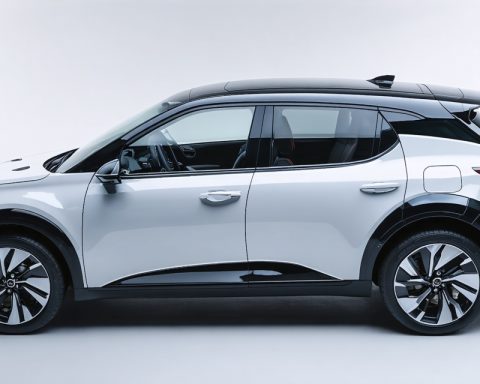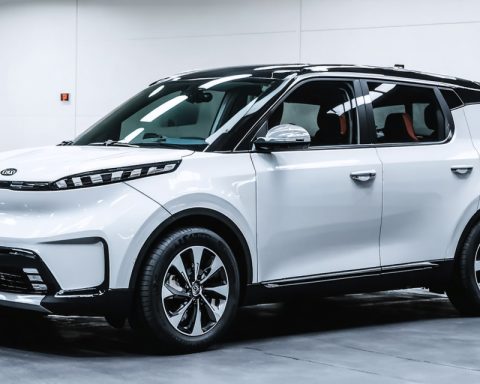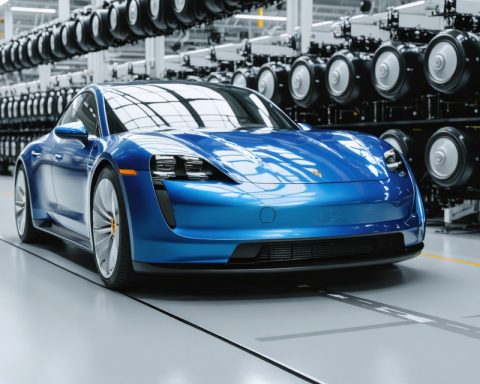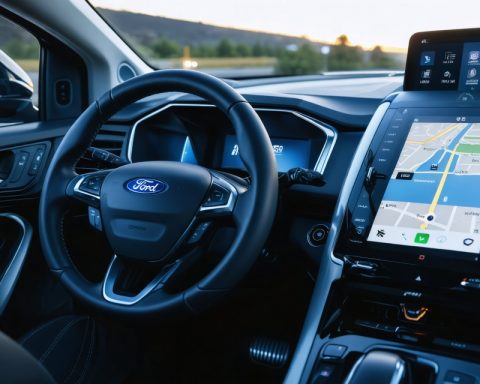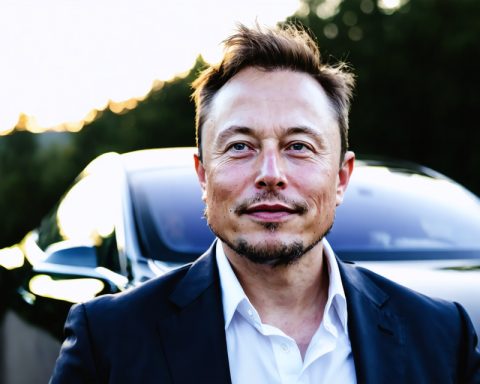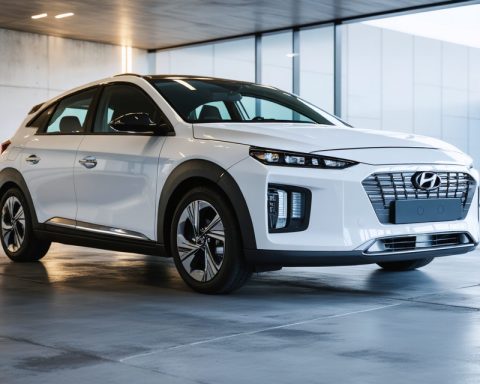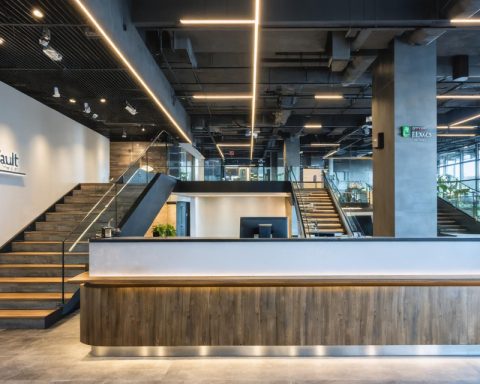- BYD’s next-gen electric vehicles claim 1,000 kW charging, enabling a five-minute recharge for 250 miles.
- This capacity is four times greater than typical Tesla models, sparking significant interest in the EV sector.
- Despite rapid charging allure, Andrew Cornelia of Mercedes-Benz suggests a balanced approach, aligning with daily life rhythm.
- Mercedes-Benz focuses on a seamless experience, deploying 400-kW stations in strategic locations, such as Starbucks and Buc-ee’s.
- BYD’s innovation highlights future possibilities, urging the industry to rethink and enhance EV infrastructure.
- While ultra-fast charging isn’t yet standard, it points towards ambitious advancements in sustainable mobility.
Electric cars are stepping on the accelerator towards a new era, and Chinese automaker BYD is audaciously leading the charge. This month, BYD electrified the auto industry by unveiling a staggering claim: their next-generation electric vehicles can gulp down 1,000 kilowatts of charging power, slashing recharge times to a mere five minutes for a range of 250 miles. That’s roughly four times the charging capacity of the typical Tesla, igniting a buzz across the global EV landscape.
For an industry perpetually dogged by “range anxiety” and lengthy recharge sessions, the evolution of faster charging seems a race against time itself. Yet, as Andrew Cornelia, CEO of Mercedes-Benz High-Power Charging, points out, the need for speed may not be as pressing as it appears. Cornelia emphasizes that the sweet spot for charging might already be within reach. While the idea of a five-minute fill-up sounds enticing, the average time spent at a gas station — once you throw in a coffee break and a quick stretch — hovers around 10 to 12 minutes.
Charging, as Cornelia suggests, should harmonize with the rhythm of our everyday lives rather than sprinting towards an arbitrary finish line. This flexibility is one of the defining perks of EV ownership. With a charging cable at the ready, downtime transforms into recharge time, be it a quick pit stop or a leisurely two-hour theater excursion.
While BYD’s announcement may conjure images of instantaneous recharges on par with swapping out a flashlight battery, Cornelia advocates for a more measured approach. Ultra-fast charging might feel like overkill for a home garage where hours before the next drive are standard. Instead, charging speed should reflect the duration and nature of the stop — a casual coffee run, yes; a full-length movie, perhaps not.
Mercedes-Benz, meanwhile, stays committed to making the charging process as seamless as possible, rolling out 400-kW stations to meet the diverse needs of U.S. drivers. Partnering with companies like Starbucks and Buc-ee’s aligns with this vision, offering drivers places of interest while they top up on power.
Yet, the audacity of BYD’s innovation cannot be dismissed outright. It serves as a testament to what’s achievable, a beacon guiding future possibilities in EV infrastructure. Even as Cornelia highlights the current limitations, he acknowledges the importance of showcasing charging’s potential.
In the grand scheme of sustainable mobility, BYD’s bold ambitions represent more than a technological leap; they usher in a narrative that challenges the status quo, urging the industry to imagine and innovate. While the ultra-fast charge may not be the standard tomorrow, it’s a resounding shout from the automotive future.
Is BYD’s Ultra-Fast Charging the Future of Electric Vehicles?
Analyzing the Impacts of BYD’s Groundbreaking Fast-Charge Technology
BYD’s announcement of revolutionary fast-charging capabilities signifies a major leap in electric vehicle (EV) technology. By proposing the possibility of recharging vehicles with 1,000 kilowatts in just five minutes to cover 250 miles, the conversation around “range anxiety” and charging infrastructure is shifting dramatically. However, what does this mean for the EV industry as a whole, and how should consumers and manufacturers navigate these changes?
Potential Benefits and Implications
1. Reduced Range Anxiety: The promise of nearly instant recharging dramatically reduces one of the most significant barriers to EV adoption. Drivers can enjoy the convenience of longer journeys without the worry of running out of power.
2. Infrastructure Demands: Implementing such high-speed charging will require extensive upgrades to current infrastructure. Charging stations need to be capable of delivering 1,000 kW, which is four times the typical capacity of most current systems like Tesla’s Superchargers.
3. Battery Technology Advancements: To withstand such rapid charge rates, advances in battery technology are imperative. These enhancements could lead to longer-lasting batteries that are more durable and efficient.
4. Environmental Considerations: High-speed charging demands more energy, which could impact the grid. Sustainable energy solutions will be essential to offset potential environmental impacts.
5. Market Positioning: Companies like Tesla, Mercedes-Benz, and others may need to adjust their strategies. BYD’s announcement could catalyze industry-wide competition to develop comparable technologies.
Challenges and Limitations
– Technological Feasibility: Real-world application of such rapid charging needs extensive testing and validation to ensure safety and reliability.
– Cost Implications: High-power charging stations are likely to be expensive to build and maintain, potentially influencing the overall cost of ownership.
– Grid Impact: Widespread adoption of ultra-fast charging will necessitate grid enhancements to cope with increased load demands.
Real-World Use Cases
– Commercial Fleets: Delivery services and commercial fleets could greatly benefit from reduced downtime, allowing for more efficient operations.
– Emergency Services: Rapid charging can ensure emergency vehicles are always ready for deployment, improving response times.
Expert Insights
According to Andrew Cornelia of Mercedes-Benz, there’s a balance to strike between speed and convenience. While ultra-fast charging opens new doors, the focus should remain on integrating charging more seamlessly into daily life. This means enhancing access to moderately fast chargers in locations where drivers naturally spend time.
Market Trends and Predictions
– Growth of Charging Infrastructure: As technology matures, we can expect increased investment in charging networks, leading to more widespread availability.
– Regulatory Support: Governments may offer incentives for developing this technology, aligning with broader sustainability goals.
– Consumer Education: As technology evolves, educating consumers on best practices and expectations will be vital in driving adoption.
Actionable Recommendations
– Research Local Charging Options: Drivers should familiarize themselves with nearby charging stations and assess the charging capabilities available.
– Consider Vehicle Use Patterns: When deciding on an EV, consider your driving habits and whether ultra-fast charging would provide significant advantages.
– Stay Informed: Follow industry developments to make informed decisions about EV purchases and infrastructure investment.
For those interested in learning more about the evolving EV landscape, consider visiting BYD’s official site for the latest updates and innovations.
In conclusion, while ultra-fast charging presents a thrilling glimpse into the future, a balanced approach considering infrastructure, battery technology, and lifestyle integration will dictate its success. As the industry evolves, staying informed and adaptable will empower consumers and businesses alike.

